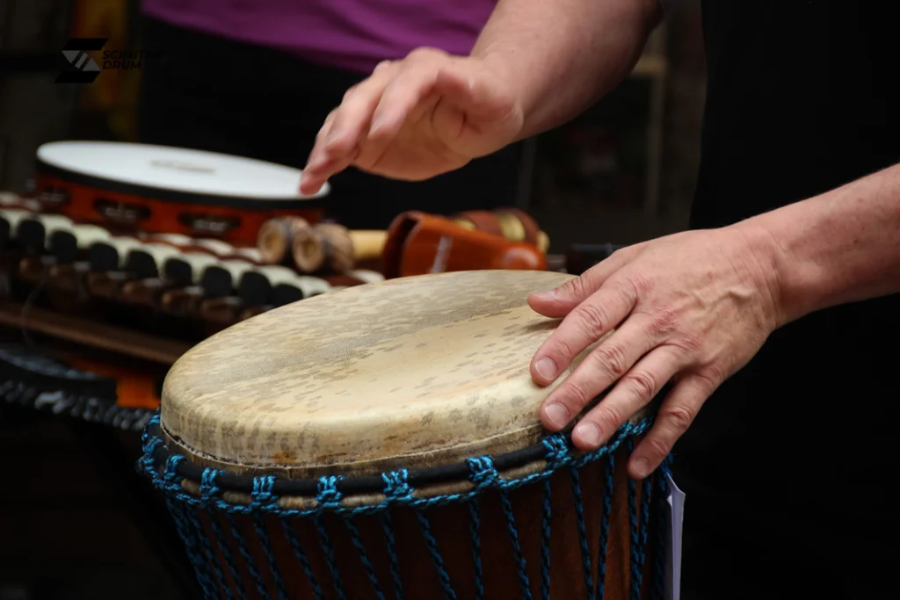Echoes of Valor: The Significance of the Scimitar Drum in Cultural Heritage And More
Imagine a time when the beat of a drum carried the spirit of ancient rituals, celebrations, and stories passed down through generations. This is the essence of the scimitar drum — a unique instrument with a crescent-shaped frame that immediately draws attention. Named after the curved scimitar sword, this drum isn’t just a musical tool; it’s a vessel of cultural heritage, producing rich, resonant sounds that are both powerful and mysterious. Its shape creates a distinctive acoustic quality, allowing the drum to produce tones that seem to echo from deep within the past.
What Is the Scimitar Drum?
The scimitar drum is a traditional percussion instrument with a unique curved shape, typically played with a scimitar-shaped stick. Originating in the Middle East and various parts of Asia, it is often used in religious ceremonies and spiritual practices. In ancient times, people would beat scimitar drums to worship their gods and invite positive spirits during rituals. These drums could range in size from large, communal instruments to smaller, handheld versions.
Over time, the scimitar drum’s popularity spread beyond Asia to Europe, where it became a symbol of strength, valor, and regality. Its distinctive shape and resonant sound made it a favorite among those who sought to express both spiritual devotion and a sense of masculine energy. Even today, the scimitar drum remains a fascinating link to cultural traditions, captivating musicians and audiences with its bold presence and historical significance.
Origins of the Name “Scimitar Drum”
The name “scimitar drum” likely originated from the visual resemblance between the drum’s shape and the curved blade of a scimitar. The drum’s crescent-shaped or curved head echoes the distinctive curve of the scimitar, a weapon known for its elegant yet powerful design. This connection is particularly meaningful in cultures where both the scimitar and drums hold significant cultural and symbolic importance.
Symbolic Significance of the Scimitar Drum
In cultures where the scimitar and various types of drums are deeply embedded in tradition, the scimitar drum represents more than just a musical instrument. It bridges the gap between music and martial heritage, symbolizing attributes such as strength, bravery, and cultural pride. The name “scimitar drum” reflects this connection, emphasizing how an instrument can embody the rich legacy and values of the people who cherish it.
Historical Origins and Cultural Significance
The scimitar, known originally as the “shamshir,” has its roots in ancient Persia, where it became a prominent weapon wielded by Persian warriors. Its distinctive curved blade was designed for swift, effective strikes, making it highly effective in battle. Over time, the scimitar became more than just a weapon; it evolved into a powerful symbol of Persian military strength and skill, representing the courage and prowess of those who wielded it. As Persian influence expanded, the scimitar’s popularity grew, spreading across the Middle East and North Africa. It was soon adopted by many different cultures, including the Arabs, Turks, and Ottomans, each of whom brought their unique styles and craftsmanship to the weapon.
Beyond its practical use in warfare, the scimitar also took on deeper cultural and religious meanings in these regions. It became a symbol of bravery, honor, and the warrior spirit, often revered in stories, poetry, and art. In Islamic tradition, the scimitar is often linked to the faith, viewed as a symbol of righteous struggle or a defender’s weapon. This blend of martial and spiritual significance ensured the scimitar’s place as a revered object in many societies, celebrated not just for its design and utility but for its representation of core values such as honor, valor, and devotion.
Features of Scimitar Drums
The scimitar drum is distinguished by several unique features:
- Scimitar Sticks: Played with uniquely shaped sticks that resemble the curved blade of a scimitar sword, enhancing the drum’s visual and symbolic appeal.
- Crescent-Shaped Frame: The drum’s crescent shape gives it a majestic and distinctive appearance, setting it apart from other percussion instruments.
- Historical Significance: Traditionally associated with Persian royalty and nobility, who employed musicians to play these drums in courts, reflecting power and prestige.
- Symbol of Regality: Scimitar drums were seen as a symbol of pride, strength, and valor, fitting for kings and warriors in ancient times.
- Modern Cultural Value: Even today, scimitar drums are valued as cultural artifacts, cherished by families as a symbol of heritage and tradition.
- Masculine Symbolism: The scimitar drum, with its sword-shaped stick and powerful sound, is often viewed as an expression of masculinity and strength.
Construction and Materials of the Scimitar Drum
The scimitar drum is crafted from a range of materials, each chosen to enhance its distinct sound and visual appeal.
- Drum Shell: Traditionally made from a single piece of wood, such as mahogany, oak, or walnut, chosen for its density, grain, and resonance. The shell is meticulously carved into a crescent shape, using the wider end as the playing surface. The thickness of the shell can vary, influencing the drum’s size and pitch.
- Drumhead: Typically crafted from a thin piece of animal skin, such as goat, calf, or sheep. The skin is stretched over the playing surface and secured with pegs or laces. Adjusting the tension of the drumhead changes the pitch, allowing for a range of tonal variations.
- Hardware: Includes tuning pegs, laces, and other components essential for the drum’s assembly. Tuning pegs, often made from wood or metal, are used to adjust the tension of the drumhead. Laces, made from strong cord or leather, secure the drumhead to the shell.
Measurements and Specifications
Scimitar drums are available in various sizes, with common diameters being 12 inches, 14 inches, and 16 inches. The depth of the drum corresponds with its size, with larger drums generally being deeper. The thickness of the shell affects the drum’s pitch, with thicker shells producing a lower tone compared to thinner ones.
Visual Representation in Art
The scimitar drum frequently appears in various forms of visual art as a symbol of cultural heritage and historical depth. Artists often incorporate the drum into paintings, sculptures, and other artistic works to highlight its significance in cultural traditions and historical stories. Through these depictions, the scimitar drum becomes a visual emblem of the rich artistic and cultural narratives that surround it.
Performance and Artistic Influence
The impact of the scimitar drum extends well beyond its use in music; it plays a vital role in performance arts such as theater and dance. Its distinctive sound and striking appearance make it a powerful tool for enhancing performances, adding a unique auditory and visual element that captivates audiences. The drum’s versatility allows it to contribute to the dramatic and emotional layers of performance, showcasing its broad influence and importance in artistic expression.
The Scimitar Drum in Contemporary Music
In today’s musical landscape, the scimitar drum has carved out a notable niche across a variety of genres. Its distinctive shape and unique sound have made it a sought-after instrument for percussionists eager to explore new tonal possibilities and infuse their performances with a touch of historical resonance. The scimitar drum’s ability to produce a broad spectrum of tones—from deep, resonant bass notes to sharp, cutting accents—makes it an exceptionally versatile instrument, capable of complementing diverse musical styles.
In the realm of world music, the scimitar drum often adds a rich cultural texture to compositions. Its ancient, evocative sound blends harmoniously with other traditional instruments, enriching the overall sonic experience. In jazz and fusion genres, percussionists leverage the scimitar drum to experiment with rhythm and texture, integrating its distinctive tonal qualities into intricate, improvisational performances. In electronic music, where artists frequently sample and alter traditional instruments, they use the scimitar drum’s natural, earthy sound to introduce an organic element. This approach bridges the gap between historical and modern musical expressions.
The Scimitar Drum in Music Education
The scimitar drum has made a notable impact in the field of music education, serving as an effective tool for teaching rhythm, cultural history, and percussion techniques. Its unique design and sound make it an engaging instrument for learners of all ages, while its rich cultural background provides valuable insights into global music traditions.
- Teaching Rhythm and Timing: In the classroom, music educators utilize the scimitar drum to introduce students to fundamental concepts of rhythm and timing. The drum’s resonant tones offer a clear and engaging example of rhythmic patterns, making it easier for students to grasp and internalize these musical concepts. Its distinctive shape and visually appealing design also capture students’ attention, encouraging them to delve deeper into the world of percussion.
- Cultural and Historical Context: Beyond its practical use in teaching rhythm, the scimitar drum is a valuable resource for exploring the cultural and historical aspects of music. Studying the drum’s origins and its significance in various cultures helps students gain a richer understanding of the diverse contexts in which people create and perform music. This broader perspective helps foster a deeper appreciation for music and its role in human society, enriching students’ overall musical education.
From Ancient Craftsmanship to Modern Innovation: The Evolution of Scimitar Drum Design
The design of the scimitar drum has undergone a fascinating transformation over the centuries, evolving from traditional craftsmanship to modern innovation. Initially, these drums were meticulously handcrafted from natural materials like wood, animal skins, and metal. Artisans carved the drum’s crescent-shaped body from a single piece of wood and covered it with stretched animal skin to produce a resonant sound.
The Impact of Global Trade and Modern Techniques
As cultures interacted through expanding trade routes, the scimitar drum’s design began to incorporate new materials and techniques. Metalworking introduced new possibilities for drum construction, while advances in materials science brought synthetic alternatives to traditional animal skins. Modern scimitar drums may feature synthetic drumheads and lightweight composite shells, enhancing their durability and ease of use.
Contemporary Innovations and Future Directions
In contemporary settings, scimitar drum design continues to innovate, driven by advances in technology and a renewed interest in traditional instruments. Modern drum makers experiment with new materials, such as carbon fiber and advanced plastics, to create drums that offer enhanced sound quality and performance. The incorporation of electronic components and amplification systems allows for greater versatility and adaptability in various musical settings.
Conclusion:
The scimitar drum is not just a musical instrument; it is a bridge between the ancient and the modern, between cultural traditions and contemporary artistry. Its crescent-shaped frame and resonant tones continue to captivate and inspire musicians, dancers, and audiences around the world. As it evolves with the times, the scimitar drum remains a testament to the enduring power of cultural heritage and the timeless allure of music.
Explore engaging stories and insights into your favorite stars at leomorg.org.







